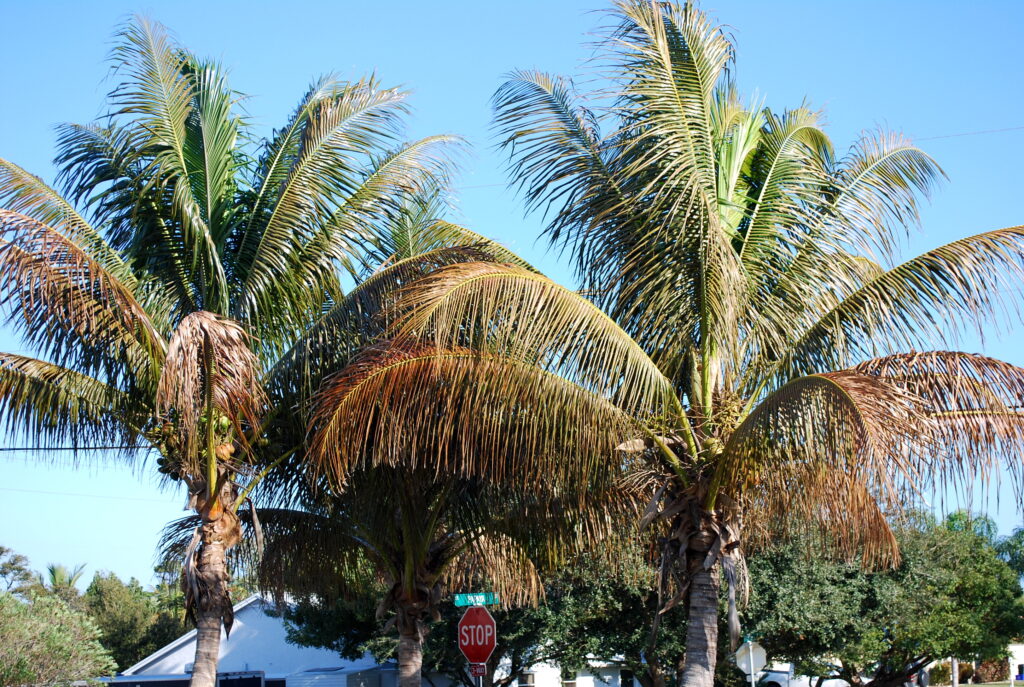Tropical and subtropical areas are prone to frosts or freezes every few years. Questions are often sent about helping the landscape after the cold. However, preparation for the cold is better than trying to fix the damage. If your landscape already felt the chill of winter, there are some tactics to protect and salvage the plants. Let’s talk about protecting the landscape when it gets cold.

The best time to prepare for cold is at planting. As the climate changes, some tropical and subtropical locations are subjected to at least one bout of frost or freezing temperatures every year. Choosing plants that withstand the occasional frost is an intelligent tactic to prevent severe landscape damage. However, beautiful, tender tropical species are favored by many folks. Protectvdelicate species selected, plant them in protected locations such as under trees or next to a structure with a southeastern exposure to limit the damage. Granny Cloud loved a few very tender plants; she calmly accepted cold damage when it occurred and cheerfully paid the replacement cost for her beloved tender tropical plants.
Here are a few tactics to protect landscape plants from falling temperatures.
A thick layer of organic mulch applied to the complete root zone (at least 1.5 to 3 times the width of the canopy) will help keep roots toasty. Mulch moderates the soil temperature and can re-radiate warmth on a cold night. On a frigid night, mulch can be placed over the entire plant and/or piled against the truck. The additional mulch placed on or over the plant must be removed as soon as the cold weather passes to prevent heat and smothering damage.
Watering the landscape before a freeze can help protect plants. Mother Nature sometimes does this for us; cold temperatures frequently follow a rainy, wet, cold front. Well-watered soil will absorb more solar radiation than dry soil and re-radiate heat at night. If the soil is not moist before falling temperatures, irrigation can be applied; be sure the water application is timed so the foliage can dry before the sun sets.
When a frost or freeze is expected, a cover may be necessary for sensitive plants on frigid nights. Cold injury may still occur if temperatures plummet, particularly on foliage in contact with the cover. Covers extending to the ground and not touching the plant foliage are best. They reduce the possibility of cold injury by capturing and holding heat in the form of warm insulating air released by the plant and surrounding soil.
To cover landscape plants, build a frame to hold the cover around the plant and away from the foliage. Anything can be used as a cover, including cloth sheets, blankets, or plastic. A heat source, such as a light bulb, can be placed inside the covered structure on frigid nights for added protection. Remove the covers in the morning as temperatures warm to prevent heat buildup from the sun. Such heat can accumulate to the point of plant damage on bright, sunny days. This means you may have to install and remove the plant cover daily until temperatures moderate.
If temperatures warm after a few days of chilly air, leave the frames in place until the chance of another blasting cold front passes. Store the covers until needed and remove the frames around the plants for quicker installation of covers the next time Jack Frost pays a visit. This is the way to protect the landscape when it gets cold.
This column and image first appeared in the Treasure Coast Newspapers.
Leave a Reply